
News • European system launch
Multi-light technology and CMOS sensor to advance gastroscopy
Fujifilm Healthcare Europe announce the European launch of the EG-860R routine gastroscope as the latest addition to their Eluxeo® endoscopy portfolio.

Fujifilm Healthcare Europe announce the European launch of the EG-860R routine gastroscope as the latest addition to their Eluxeo® endoscopy portfolio.
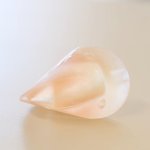
Engineers developed a robotic probe that can generate high-resolution 3D ultrasound images from deep inside the gastrointestinal tract. The robot reaches its target with a unique kind of movement.
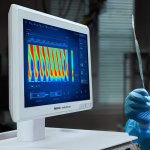
Medtronic announced it has received CE Mark approval for its Endoflip 300 impedance planimetry system to measure pressure and dimensions in the oesophagus and pylorus in adults.

Catheter ablation of atrial fibrillation is an important treatment option for heart rhythm maintenance and symptom reduction. Now, an international consensus statement reflects new techniques.
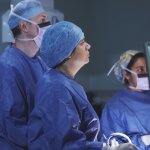
When treating oesophageal cancer, surgeons may have a preference towards either open surgery or keyhole techniques. Now, a study explored superiority of one over the other in terms of recovery time and complications.
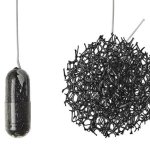
A new test to help diagnose Barrett’s oesophagus – a condition that can lead to oesophageal cancer – has reduced the need for invasive endoscopy in thousands of low-risk patients.

Academic labs and biotech firms pioneer multi-cancer early detection with emerging technologies. Screening for multiple cancers with a simple blood or urinary draw could be a game-changer. Two research teams in particular have advanced the field.
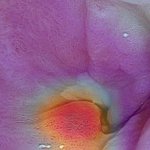
Experts at University College London (UCL) and spinout company Odin Vision working with clinicians at UCLH have used artificial intelligence (AI) to help detect early signs of oesophageal cancer. The first procedure in the world using the AI technology was performed at University College Hospital by UCLH consultant gastroenterologist Dr Rehan Haidry. The system, called CADU, uses AI to support…

A ‘pill on a string’ test can identify ten times more people with Barrett’s oesophagus than the usual GP route, a new study shows. The test, which can be carried out by a nurse in a GP surgery, is also better at picking up abnormal cells and potentially early-stage cancer. Barrett’s oesophagus is a condition that can lead to oesophageal cancer in a small number of people. It’s usually…

Aspirin is associated with a reduction in the risk of developing several cancers of the digestive tract, including some that are almost invariably fatal, such as pancreatic and liver cancers.

Errors in breast imaging: the subject is vexing. How to avoid or address errors are also concerning. These subjects lay at the core of a presentation to radiologists during the recent annual congress of the British Institute of Radiology, when consultant radiologist Dr Rosalind Given-Wilson described the how, where, and what of errors or near misses, along with their impact on patients and…

The advent of digital pathology is helping to address some of the challenges surrounding tissue microarrays as they are integrated into the digital workflow, in some ways giving them ‘a new lease of life’, according to Professor Inti Zlobec, who spoke at the Digital Pathology and AI Congress in London last December. As Head of the Translational Research Unit at the Institute of Pathology,…

More than one in ten cancer patients do not die from their cancer but from heart and blood vessel problems instead, according to new research published in the European Heart Journal. For some cancers, like breast, prostate, endometrial, and thyroid cancer, around half will die from cardiovascular disease (CVD). Dr Nicholas Zaorsky, a radiation oncologist, and Dr Kathleen Sturgeon, an assistant…

Obesity not only means someone is overweight but, over time, they will probably suffer sequelae that increasingly impair quality of life and are potentially fatal – these include hypertension, coronary heart disease, type two diabetes, pulmonary function disorders, tumours, plus an increased risk during surgery and anaesthesia. In patients with morbid obesity, class three obesity, according to…

Engineers have developed a prototype endoscope which they say could cut the cost of manufacture from £80,000 to just £40. The redesigned device has the potential to revolutionise cancer screening in low-to-middle income countries where the cost of equipment makes screening prohibitively expensive. The endoscope is designed to see inside the upper part of the digestive tract for signs of…

A Spanish team has, for the first time, successfully placed a pulmonary valve using catheterisation through the hepatic vein in a paediatric patient. Specialists believe this type of intervention could become an interesting alternative when traditional access points are not available.

This year Pentax Medical launches three premium products for use in gastroenterology, Ear nose and throat (ENT) and bronchoscopy. These result from highly focused global research and development, for which Mike Drexel, the company’s Chief Technology Officer, is responsible. In our interview he discusses how the firm’s globalised approach to product research and development has taken shape.
Researchers at the Cancer Research UK Cambridge Institute sprayed a dye on oesophageal tissue samples taken from people with Barrett’s oesophagus – a condition that increases the risk of developing oesophageal cancer. The dye sticks to healthy oesophageal cells but not to pre-cancerous cells. They then shone near-infrared light - which is just beyond the red colours that our eyes can normally…

The radiology department at the German hospital Asklepios-Klinik Lindau recently received the high-performance R/F table Sonialvision G4, a new generation of X-ray and fluoroscopy systems, which complements examination and therapy options, particularly in internal medicine, as well as general surgery and for spinal disorders, the manufacturer Shimadzu reports.

With 3-D printing revolutionising manufacturing, its healthcare potential is being explored for medical devices, prosthetics, dentistry and drug development. One area under the spotlight is the creation of artificial muscles using a 3-D printing system. Dr Fergal Coulter, who has played an important role in helping develop the technique, outlined the manufacturing process, which he invented for…

Cardiac catheterisation is the gold standard for diagnosing coronary artery disease (CAD), the main cause of death worldwide. More than 3.5 million invasive coronary angiographies (ICAs) are performed in the European Union each year, tendency rising. Nearly 60 percent of these minimal invasive examinations do not result in further treatment, since the patients do not have obstructive epicardial…

Coronary artery disease (CAD) is the major killer worldwide. Its early detection can save the lives of many. Computed tomography (CT) has shown tremendous results in this area, but its advantage over more invasive techniques remains to be demonstrated, especially in patients with low to moderate risk.

‘Health insurers should keep a tighter rein on the quality of endoscopic interventions because, mostly, they represent a gentler alternative to surgery,’ asserts international expert Horst Neuhaus, during an EH interview. Report: Daniela Zimmermann/Juliane Dannert
Ultrasound is playing an increasing role in the management of the upper and lower airways, particularly in interventional procedures and emergency situations. It is also used to enhance patient safety. Report: Mark Nicholls

Radiotherapy is being proposed to treat heart diseases, specifically for hypertension and atrial fibrillation (AF).

Ultrasound is playing an increasing role in the management of the upper and lower airways, particularly in interventional procedures and emergency situations. It is also used to enhance patient safety.

Medicine as a profession has held a superior aloofness for many centuries, wary of losing its unique distinctiveness and esteem if ‘tainted’ with other professions.


Will MRI become routine modality? Today, thoracic MRI is rarely performed in Europe. But this will change over the next decade, predicts Professor Hans-Ulrich Kauczor, Medical Director of the Radiology Clinic at University Hospital Heidelberg. He expects Germany to be at the forefront of this development because MRI technology, despite the high costs, is already widely used here and because CT…

Morbid obesity is a chronic, lifelong, multifactorial, constitutional disease with negative medical, psychological, physical, social and economic side-effects. Obesity-related secondary diseases are Type 2 diabetes mellitus (T2DM), cardiovascular diseases such as hypertension or sleep apnoea. Report: Holger Zorn
Endoscopy has advanced dramatically in the past decade with innovative technologies introduced by industry and novel procedures pioneered by physicians. Given a choice among the broad range of new tools, endoscopic surgeons simply want it all -- and are asking for more. During the Medica 2010 Congress, the Innovations in Endoscopy session rang with the word ‘combinations’.

Until now, interventional and endoscopic therapies have held little importance in common cancer treatment. However, given the trend towards personalised medicine and targeted cancer therapy, increasing attention is being paid to reasonable complements to traditional cancer surgery.

Ultrasound is the undisputed choice for foetal imaging. However, the lack of amniotic fluid, an unfavourable foetal position or maternal obesity could daunt even the best radiographer. In such circumstances prenatal magnetic resonance imaging (MRI) – a non-invasive and non-irradiating procedure – is a helpful diagnostic tool.

In 2000, the Israeli firm Given Imaging introduced Video Capsule Endoscopy (VCE), a new technology initially devoted to small bowel examination. Since then, the EndoCapsule from Olympus Japan, MiroCam from IntroMedic Korea and some less advanced devices from China have been introduced as technical competition for some new areas, such as oesophagus or colon.

New research on deaths from cancer in Europe concludes that the key priority for continuing to reduce mortality is cutting tobacco smoking. The study shows that, while deaths for men from lung cancer in the EU have declined overall, by 17 % from 1995 to 2004, they rose by 27% for women over the same period. It also reveals other significant differences in the mortality between different EU…

When we organised the first Diagnostic Week in Karlsruhe, in 1969, no one could have known that this event would one day turn into the annual highlight in the world of medicine, reflected Dr Wolfgang Albath, laboratory medicine pioneer and one of the founding fathers of MEDICA the world`s largest medical trade show. Initially planned as a moving exhibition, the show has been based in…

High resolution endoscopy triggers new approaches to the detection and resection of early-stage carcinomas. Zoom, Narrow Band Imaging and HDTV allow significant magnification of the endoscopic image and increasingly detailed rendering of the mucous membrane.

In 2007, Professor Andreas Franke, of Aachen University Medical Center, Germany, was the first cardiologist in Europe to perform minimally invasive cardiac catheterisation procedures under live 3-D ultrasound guidance.
Almost 25 years ago Michael Harrison of the University of California, San Francisco (UCSF) operated on the bladder of an unborn child. Almost eight years later, surgery was carried out on the diaphragm of an unborn child. His approach was controversial: a paediatric surgeon opened the abdomen and uterus of the pregnant woman, lifted out the foetus, performed the surgery and returned the foetus to…

Magnetic resonance imaging is gaining increasing importance as a second imaging process in prenatal diagnosis in addition to ultrasound examination, according to Dr Daniela Prayer, a paediatric radiologist at the University Clinic for Radiological Diagnostics at Vienna University Hospital.

Artiste is a linear accelerator and CT scanner combined. At the German Cancer Research Centre, a team of scientists led by Professors Wolfgang Schlegel and Uwe Oelfke of the Medical Physics in Radiation Oncology division, contributed substantially to the technical development of the Artiste platform. They report that users will be able to observe and correct the actual position, extension and…
Magnetic resonance imaging is increasingly gaining importance as a second imaging process in prenatal diagnosis in addition to ultrasound examination, Dr. Daniela Prayer, a pediatric radiologist of the University Clinic for Radiological Diagnostics at the Vienna University Hospital, told reporters at a press conference held Friday.

For individualised radiotherapy, high-precision delineation and characterisation of the tumour is critical. If highest radiation doses are delivered in a targeted fashion, the chance of tumour cell kill increases and tumour control probability is enhanced.

UK - Optical imaging company Michelson Diagnostics Ltd (MDL) has announced successful initial results from clinical testing of its novel optical coherence tomography (OCT) imaging technology. The tests, performed on cancerous and precancerous human oesophagus and lymph node tissue, were designed to establish the potential value of MDL's optical imaging technology used during cancer surgery.

Children with recessive dystrophic epidermolysis bulosa (RDEB) lack a protein that binds the skin to the body, resulting in fragile skin that sloughs off with little movement or friction.

The Technology initiative “Molecular Imaging” aims to strengthen the synergies of science and industry in research and development of new technologies in order to significantly improve diagnostic and treatment options, for example for cardiovascular diseases, cancer or Alzheimer's.

Dr Thomas Beyer: `PET/CT is a non-invasive imaging modality that captures anatomical and metabolic data in a single scan´

Endoscopic ultrasound (EUS) is the combination of ultrasound and endoscopy, which allows placement of high-frequency transducers close to the intestinal wall and adjacent structures. As EUS enters its third decade, it is used for locoregional staging of many upper gastrointestinal malignancies, including cancers of the oesophagus, stomach, duodenum, ampulla of Vater, extrahepatic bile ducts and…

About a year ago, gastroenterologist Professor Horst Neuhaus began to use a high definition TV (HDTV) system as an aid in the endoscopic procedures carried out at Dusseldorf's Evangelisches Krankenhaus, in the Medical Clinic and Reference Centre for Endoscopy, of which he is head.

The Helios group of hospitals recently introduced a new scheme for a unified, comparable set of indicators to describe the most important services and quality parameters in hospitals. The model is a trend-setting step towards greater transparency - with less administrative effort.

Tissue engineering caused a stir at the 34th Annual Meeting of the Germany Society for Thoracic and Cardiovascular Surgery.

By Professor Horst Neuhaus MD, Head of Internal Medicine at the Evangelical Hospital, Dusseldorf, describes highlights during April's 33rd Congress of the German Society of Endoscopy and Imaging Procedures (DGE-BV).